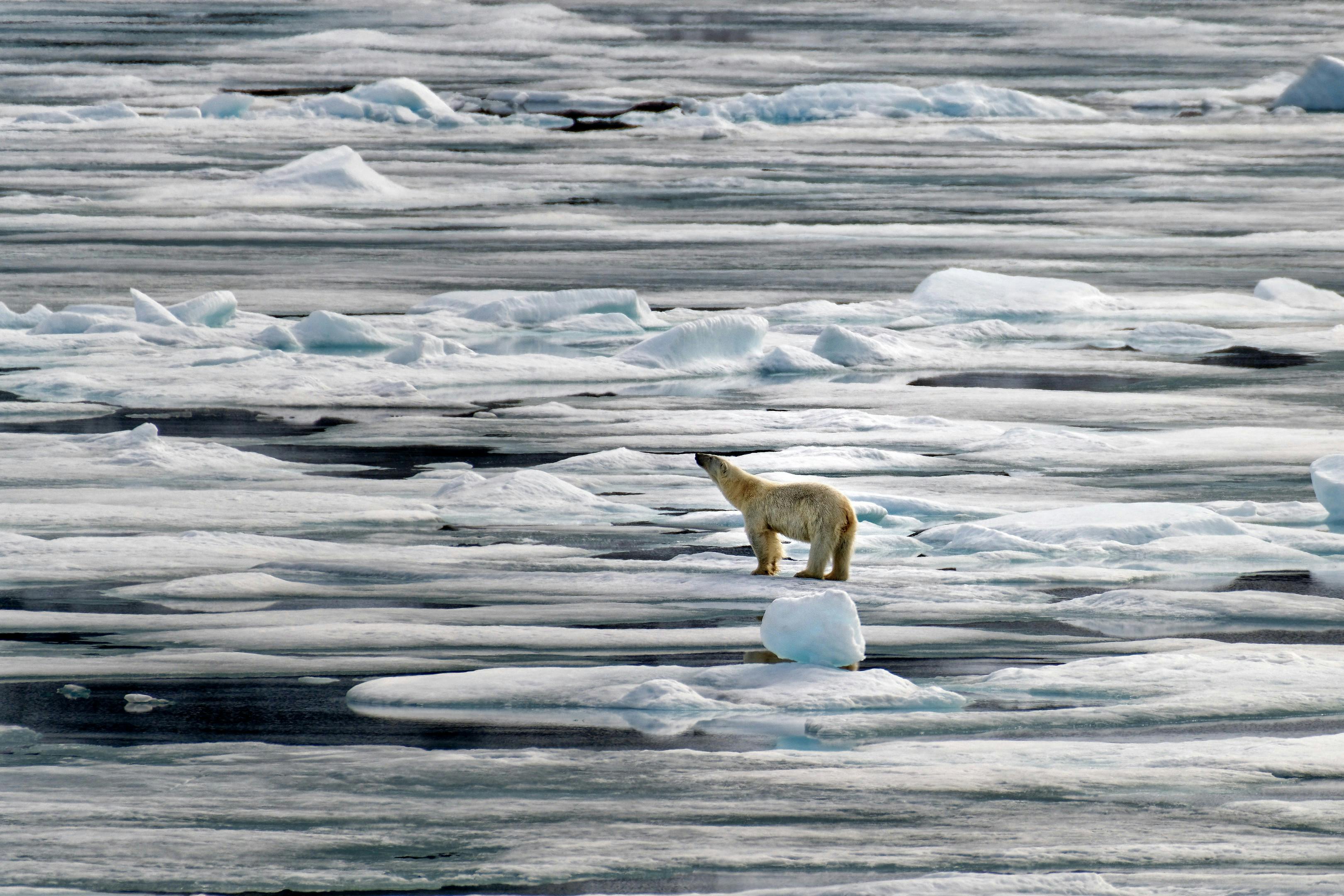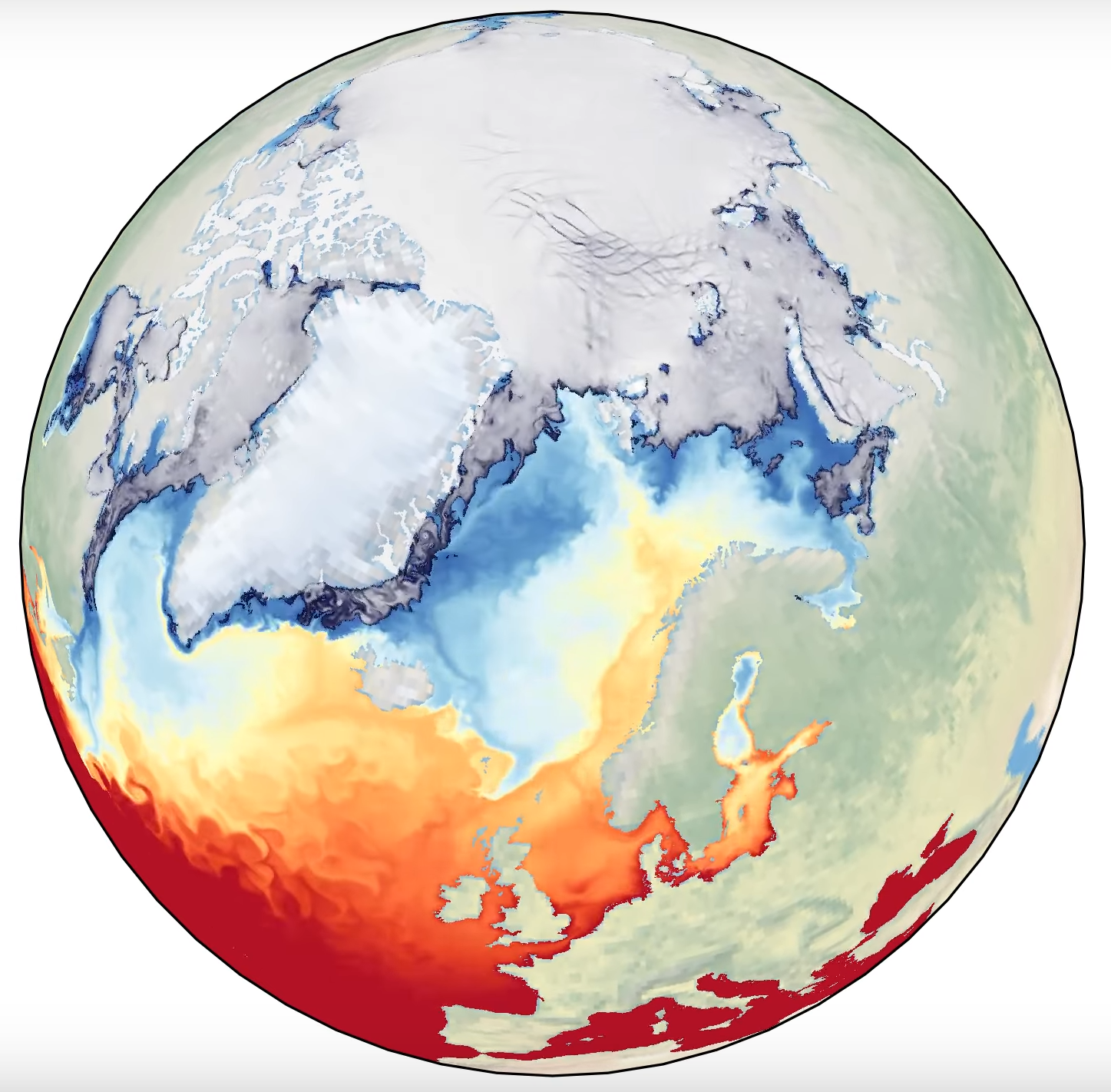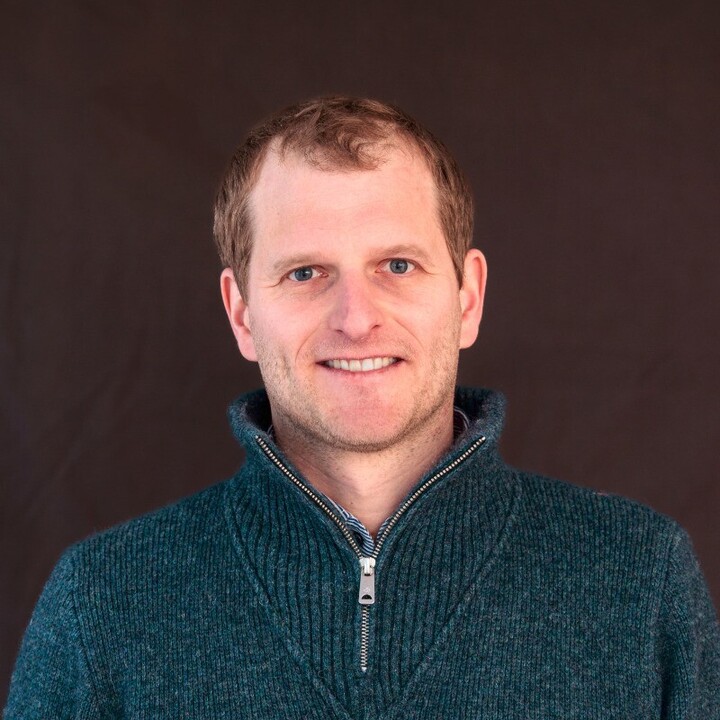From Coarse to Crisp: Increasing the Horizontal Resolution of Global Ocean and Sea Ice Simulations

The ocean is Earth’s thermostat: it has absorbed roughly 90% of the excess heat accumulated in the climate system since pre-industrial times and taken up around 30% of anthropogenic CO₂. Sea ice acts as the planet’s mirror, reflecting sunlight and helping to stabilise regional and global climates. But both systems are changing quickly — Arctic sea ice is declining, oceans are warming, and small-scale processes that control heat and carbon transport are often poorly represented in global climate models. To reduce uncertainty in climate projections we must revisit the way we simulate the ocean and sea ice — and that means testing whether finer horizontal resolution materially improves model fidelity.
At the Earth and Climate research pole of UCLouvain’s Earth and Life Institute, Dr Antoine Barthélemy handles the technical aspects of a project that asks a deceptively simple question with far-reaching consequences: if we increase the horizontal resolution of a coupled ocean–sea ice model, do we get measurably better results — and if so, where and why? Answering this calls for both deep domain expertise and access to world-class high performance computing.
Antoine Barthélemy: “At low resolution, crucial details disappear. The fine structure of the ice edge, the influence of bathymetry on local currents, or the role of small-scale turbulence — these are features that can drive significant differences in how heat and carbon are redistributed. If we blur them out, our projections may be less accurate.”
The resolution problem: why small scales matter
Numerical climate models divide the globe into grid cells. Coarse grids capture large-scale circulation patterns but smooth over small-scale processes: coastal geometry, narrow straits, mesoscale eddies and the detailed geometry of the sea ice edge. In the ocean, eddies — rotating swirls tens to a few hundred kilometres across — play a crucial role in transporting heat, salt and nutrients. In sea ice, small leads and narrow flows determine how the ice moves, aggregates, and melts. Missing these features can alter how the model represents critical feedbacks such as the ice–albedo effect, with direct implications for projections of regional climate, sea level and ecosystem impacts.
As Barthélemy explains, “you can have whole classes of processes that are effectively parameterised because the grid cannot resolve them. The question our project asks is: at what point does making the grid finer stop being a cosmetic change and start producing better, actionable science?”

Designing the experiment: multiple resolutions, one objective
The team set up a systematic experiment: run the same coupled ocean–sea ice model at several horizontal resolutions, compare key diagnostics (sea surface temperature, sea ice concentration, currents, eddy statistics and heat/carbon transport), and assess how results change with grid refinement. The logic is straightforward; the execution is not. A higher resolution means far more grid cells, smaller time steps, larger I/O volumes and exponentially greater computational cost.
To make the highest-resolution global experiments feasible the project secured an exceptional HPC allocation: 7,000,000 CPU hours on LUMI. The highest-resolution run will consume approximately 70% of this allocation. Barthélemy puts the scale into perspective: “running this highest-resolution configuration on a powerful laptop with 16 CPU cores would take about 35 years. On LUMI, using roughly 4,480 cores in parallel, we obtain the results in about 45 days.”
From terabytes to insight: the practical work
High-resolution global simulations do more than require compute cycles — they produce prodigious amounts of data. The team had to plan data management, adopt parallel post-processing workflows and design visualisations that allow scientists to spot meaningful differences across resolutions. Running the experiments also revealed technical subtleties: for instance, finer coastal geometry can change how sea ice behaves in the model, sometimes producing unintended ice “sticking” or accumulations that must be diagnosed and corrected.
Antoine Barthélemy: “When you increase resolution the coastline becomes more detailed: fjords, small bays and islands appear. That sounds desirable, but it also introduces new numerical and physical behaviours in the sea ice that we didn’t have at coarse resolution — and we need to understand and address those technical issues.”
The lab also benefits from an internal support setup: Antoine describes his role as a research computer scientist who supports model configuration, runs simulations when required, and helps colleagues with the computational workflow. “We are a team of two supporting the lab’s computational needs,” he says — emphasising that doing these experiments requires both scientific and engineering expertise.
Why the results matter
A realistic ocean–sea ice component cascades through the entire coupled climate system. Atmosphere models respond to more accurate heat fluxes from the ocean; ice-sheet and coastal models depend on how warm waters approach margins; biogeochemical cycles and ecosystem forecasts are affected by how eddies and currents stir nutrients. Therefore, demonstrating that higher horizontal resolution materially improves ocean-sea ice fidelity would have broad implications - from improving Earth system predictions to better informing policymakers about regional climate risks.
Importantly, Barthélemy emphasises that a negative result is still informative: if increased resolution does not substantially reduce key uncertainties, then development effort should be redirected to other bottlenecks — for example, improved physical parameterisations, coupling strategies, or representation of biogeochemistry.
Accessing LUMI: a practical path
The path to LUMI began with preparatory tests and small projects used to build the high-resolution configuration. The team applied for the main allocation via EuroCC Belgium and received the award. Antoine reflects on the process with both enthusiasm and pragmatism: “preparatory projects are a great way to test whether your model runs on the machine. It’s easy to underestimate how accessible these resources are — my message to other researchers is simple: just do it.”
Antoine Barthélemy: “So far, getting access to LUMI felt like an outstanding investment: relatively little work to prepare compared with the scale of resources you obtain in return. Once you taste running at that scale, it’s hard to go back to small simulations.”
The team’s experience with LUMI support was also positive. While the project currently runs on CPU architectures (the NEMO model they use is a widely-developed community model and not something a single lab can convert to GPU overnight), Antoine notes that the NEMO consortium is moving toward GPU compatibility and that the community will likely migrate progressively as the software evolves.
People, motivation and perspective
The meeting with Antoine captures a human dimension that often remains behind the scenes: Antoine recounted a professional path that led him from a PhD to industry and back to research support. He describes satisfaction in enabling colleagues and enabling science at scale, while recognising his role is a supporting one: setting up models, running experiments, and handing results to domain scientists for analysis and publication.
Antoine Barthélemy: “I left the private sector because I wanted my work to be more meaningful for society. Here, even if I’m a bit distant from the final products, I know I’m working in the right direction on topics I love — and that’s motivating.”
Looking forward
As the project’s experiments complete and analysis advances, the team expects to publish comparisons across resolutions and to share movies and visualisations that illustrate the improved detail. Early outreach material — videos and screenshots showing side-by-side differences between coarse and fine runs — already help convey the value of resolution to non-specialist audiences: https://resist-impuls.github.io/outreach/.
Ultimately, the work is about reducing uncertainty: determining whether higher-resolution ocean and sea ice simulations materially improve projections, and guiding where modelling effort should be invested next. In a world of limited time and finite compute, knowing where to put resources is as important as having those resources in the first place.
Project lead: Prof François Massonnet - F.R.S.-FNRS Research Associate and part-time Lecturer, Earth and Climate research pole, Earth and Life Institute, UCLouvain
LUMI allocation: 7,000,000 CPU hours (highest-resolution experiment ≈ 70% of allocation)
Relevant links
📷 Source: Pexels.com (by Gu Bra)
Published on 05/09/2025
Antoine Barthélemy

Antoine Barthélemy earned a master’s degree in physics with a specialisation in climate sciences from UCLouvain in 2011. He completed his PhD in 2016, focusing on ocean and sea ice modelling. Currently, he works as a research computer scientist in the Earth and Climate research pole at the Earth and Life Institute, UCLouvain, where he supports researchers in their computing-related tasks.